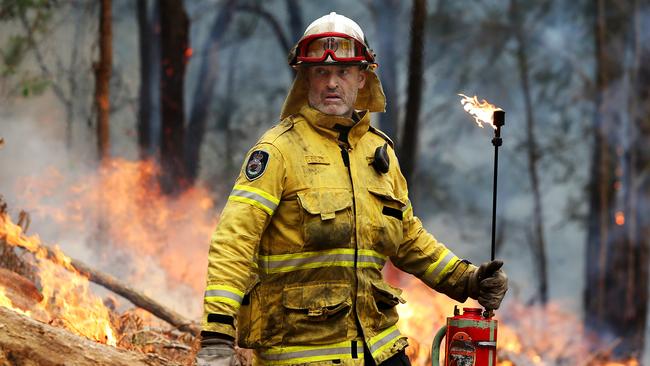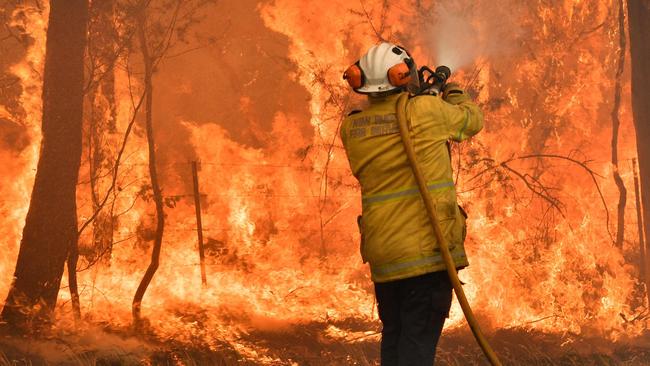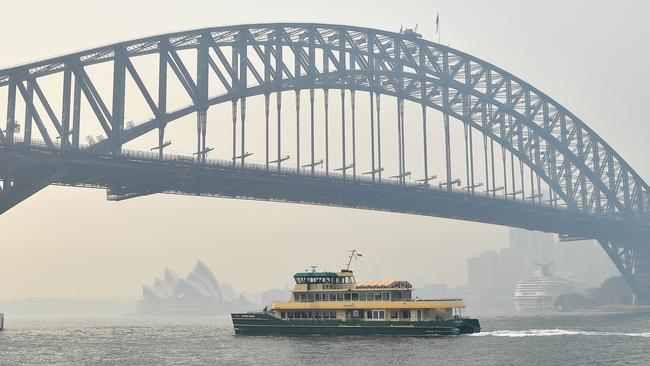No relief: hellish fire season to escalate
This is the ‘most destructive bushfire season’ since Federation almost 120 years ago.

Bushfires ravaging the nation’s eastern seaboard are expected to intensify over the coming months as the country experiences the “most destructive bushfire season” since Federation almost 120 years ago.
Ross Bradstock, who heads the Centre for Environmental Risk Management of Bushfires, said severe drought had been the primary driver of this spring’s “record-breaking fires”, warning residents to prepare for an unprecedented summer of blazes, worse than in Victoria’s devastating Black Saturday and Ash Wednesday fires.
READ MORE: Holy smoke: athletes gasping in bushfire smoke | ‘I’ve never seen something like this’ | One family’s baptism of fire
“The fires in northern NSW are nothing like we’ve seen before — it’s just off the scale,” he said.
Professor Bradstock said the “sheer size and number of fires” meant the threat in NSW was likely to accelerate through this month and January, particularly given the lack of rain.
“So far, the losses have not been as high as Black Saturday and Ash Wednesday, but both of those events were in February,” he said.
“It’s shaping up to be one of the worst fire seasons in Australia’s history.”
The NSW Environment Department said a “strong southerly” would clear the skies of smoke on Wednesday, but doctors said it would not be enough to offset the long-term health impacts of breathing in heavily-polluted air.

The warning came as Sydney’s skyline was once again swallowed by a “toxic” layer of smog on Tuesday.
Ferry services were suspended, workplaces evacuated and sports events cancelled as the city’s air quality reached up to 12 times hazardous levels.
The most harmful level of pollution measured by the NSW Environment Department is PM2.5 — particulate matter that is less than 2.5 micrometres in diameter. The guideline safe level of PM2.5 is 25. Levels in some parts of Sydney exceeded that by 10 times on Tuesday — the equivalent of smoking 10 cigarettes.
Macquarie Park in Sydney’s northwest recorded the state’s worst air quality rating of 2214. Anything above 200 PM2.5, a measure of harmful particulate matter in the air, is considered hazardous. Sydney’s southwest was more than five times worse than the “hazardous” level.
“PM2.5 enters the bloodstream and flows through different body systems,” said Yuming Guo, associate professor of environmental epidemiology at Melbourne’s Monash University. “It can flow throw to your brain and it can affect the respiratory, cardiovascular and immune systems.”

“The smoke in Sydney is some of the worst air quality we’ve seen,” Richard Broome, director of environmental health at NSW Health, said on Tuesday.
NSW Ambulance superintendent Brent Armitage said paramedics were attending up to 100 respiratory-related callouts a day.
Meanwhile, bushfires ringed the harbour city, including in the Hawkesbury region and near Warragamba Dam, causing a thick blanket of smoke to settle in the city basin.
The 36,000ha Three Mile fire, west of Gosford, was the only one of the state’s 87 active bushfires that escalated to emergency level on Tuesday.
Authorities were relieved the blaze did not merge with the more than 300,000ha Gospers Mountain fire to its west, but much of the firefighting effort focused on defending waterside towns that have no road access.
Visibility was so poor along the Hawkesbury River from smoke that one vessel became lodged in a sandbank, unable to see where it was going.



To join the conversation, please log in. Don't have an account? Register
Join the conversation, you are commenting as Logout